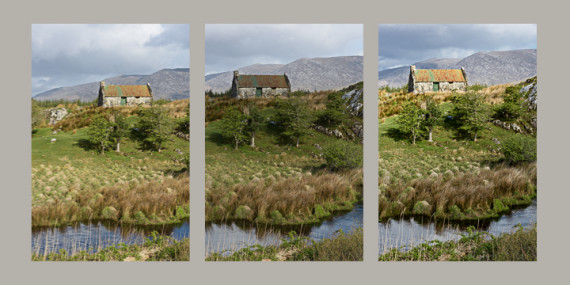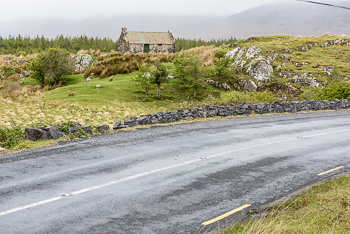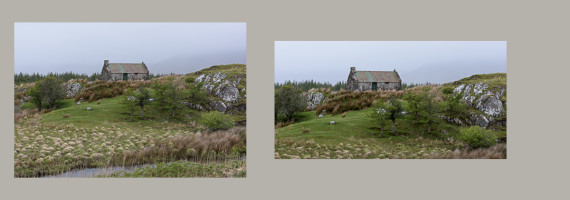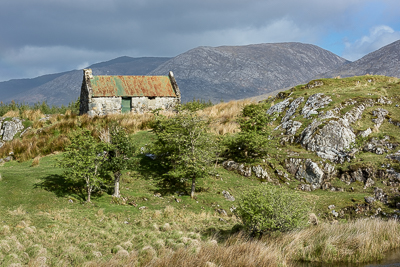Rarely have I been fortunate enough to plan for, or come across a scene where the weather was ideal, the lighting was perfect, the subject matter was compelling, the composition magically appeared in my viewfinder and all I had to do was to click the shutter release. While for many good photographers spontaneity is the key to their success, for me, a more disciplined approach (some of my friends say, over-disciplined!) is the norm. It is unusual – highly unusual – for me to capture the really good image in one shot, pack up my gear and move on looking for the next possibility.
My photography is a challenge of patience, possibilities and probabilities. The more opportunities I give myself to make a good photograph, the higher the probability that I might be successful. And one’s definition of a “good photograph” is highly dependent on how demanding we are of ourselves and how high we set the bar. Remember, Ansel Adams reportedly said that making 12 significant photographs a year was a “good crop.”
I’m also a big believer that while we’re out shooting, we may not be in the best position to know how good that last photograph really was. How many times have I been very excited about a photograph I was taking, only to realize when I got home and viewed the image that I thought was extraordinary, that it was nothing more than ordinary! How many times have I said to myself when reviewing photographs at home, “what was I thinking?! Why did I spend so much time on this ordinary image?” And how many times have I evaluated a photograph at home, only to lament that I hadn’t tried a number of different approaches with the shot; or why didn’t I just wait for the light to improve; or why didn’t I just move a few feet to the left, right, forward or backward for a better composition. Why didn’t I really “work” the scene when I was first there? “Work it,” so that I exhausted the many, many possible images that the scene might have provided. Very often we’re not able to return to a location. So making sure we have worked all the possibilities when we are there is critical.
A situation I encountered on a recent trip to Ireland will demonstrate this topic. I was driving around the west coast of Ireland early in the morning with no destination in mind, other than to hopefully find something interesting to shoot. I was by myself, so searching the landscape for something photographic was challenging, especially because the roads were narrow and for some reason, the Irish drive on the wrong side of the road. At that point, the morning had not been successful photographically. Here’s a scene from the side of the road that I almost drove past. I thought it might have some possibilities, but I wasn’t sure.
Obviously, from the side of the road, the composition didn’t work. There were electrical lines above and the road didn’t belong in the shot. As the rain slowed down, I got out of the car and walked along the road looking for possible compositions. I found a number that I thought had potential. I began shooting. I won’t bore you with all the shots I took that morning (there were 26), but I wasn’t giving up easily!
That evening, after importing the days’ images into Lightroom, I reviewed the images of the old stone structure and I was disappointed. There was no light on the building and I felt the image was compromised for that reason. Close, but no photograph!
One of the luxuries of being in the same general location for several days, is that if the weather or lighting conditions aren’t ideal on one day, you have the opportunity to try again. Or, if the lighting might be better at a different time of day, you can try again at a different time. Remember, however, that the only thing we know for certain, is what the scene looks like right now. If you decide to come back at a more “ideal” time of day, it may be raining, snowing, totally overcast or have a “bald”sky with no clouds or character. While I felt I exhausted the possibilities on Day 1, I decided to return the next day and found very different lighting and weather conditions. On the first day I had only shot landscape-oriented images, so I decided to try some other variations. 
Notice the changing light and the changing clouds. Is one better than another? The real question is what mood does the photographer wish to convey and does one image convey that better than another. For the moment, I’m tending towards one of the landscape-oriented versions of the image with the stone structure well lit by the sun, a hint of blue sky and a little of the texture visible from the distant mountains. Notice the totally different “feel” of this image versus what I found just 24 hours before.
In all, over two days, I took 46 photographs of this very simple scene.
What do you think?





Love the final photo–reminds me of a small village in England or Ireland. Beautiful!
Thanks, Terry!
I like your final image a lot. The first image revealed the potential of the scene with good light but had problems with the sky and obvious problems with the foreground. The second and third images are blah with poor light and uninteresting sky. The fifth image has better sky but the same blah light while the fourth and sixth are better on both counts, particularly the sky in the sixth, and are options. The final decision to go with landscape rather than portrait, though, is the best because it reveals the cottage against the lovely shape of the mountains and also balances the house against the large rock to the right. In the fourth and sixth images the cottage is balanced against the stream, but the horizontal is better.
The article is a very good reminder for me of the importance of thinking of a shoot in an expanded time frame. Sometimes that is impossible while traveling, but it becomes more possible if that approach is held firmly in mind. The article helps me to do that.
Thanks, Ray! One of the beauties of photography is that there is rarely one “right” answer. One of my objectives in writing the post was to emphasize that there are often many possibilities and we often don’t know for certain at the time. That’s the reason for trying many alternatives.
Vertical landscapes can be very compelling and also provide a different, and sometimes unexpected, perspective. They can engage the viewer in some of the smaller features of the scene (such as the stream in your image) while still giving a hint of the broader landscape.
I like the color palette a lot. Having been to Ireland, I can appreciate the mood this set. A question…I love bold foreground elements, so I am biased. Did you choose not to include the stream and its fauna because it unbalanced the picture, took the focus away from the house? I thought the stream was interesting enough to include.
Good lesson to me in persevering for the light. Thanks
Bruce
Hi Bruce. I actually like the portrait-oriented shot with the stream quite a bit. It definitely adds another layer (near, mid, far) and it’s an element that helps give a sense of the place. It does add a little additional complexity to the image, so for me, it’s close to a toss-up between the landscape and portrait orientation.